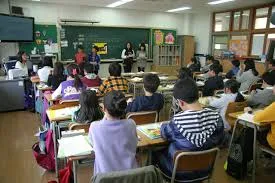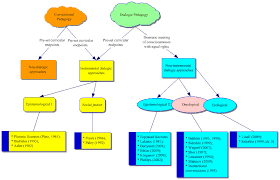Active Learning Strategies and Examples
1. What is a learning strategy?
Learning strategy refers to the rules,
methods, skills, and control measures that students use to ensure effective
learning in learning activities.
This definition has the following points:
- Learning strategies are measures and schemes that learners actively use in order to achieve their learning goals.
- Learning strategy is the basic condition to improve learning efficiency and ensure the learning effect.
- Learning strategy is a kind of procedural knowledge, which consists of a series of rules and skill systems.
- Learning strategies can be developed through teaching.
2. What are the learning and development strategies and learning strategies examples?
1. Six learning and development strategies of Nesbit and others.
Nesbit and
others believe that learning strategies contain six components:
Questioning,
planning, regulation, review, revision, and self-assessment. And these learning
strategy elements are arranged in three levels: the first level is a general
strategy, including attitude and motivation; the second level is macro
strategy, mainly including regulation, review, revision, and self-evaluation;
the third level is the micro strategy, mainly including questioning and planning.
2. Weinstein's four-component theory
According to
Weinstein, learning strategies include:
- Cognitive information processing strategies, such as finishing strategies.
- Active learning strategies, such as self-examination;
- Supportive strategies, such as the way to deal with anxiety;
- Met cognitive strategies, such as monitoring the acquisition of new information. Based on this division, Weinstein developed a learning strategy scale, which consists of ten subscales: information processing, key points of selection, examination strategy, attitude, motivation, time management, concentration, anxiety, learning aids, and self-examination.
3. Dan Sellen's learning strategy system
Dan Sellen
divides learning strategies into two categories. One is the basic strategies
directly used to operate learning materials. It includes the strategy of
getting and storing information, and the strategy of extracting and using the
information.
The second is the auxiliary strategy to maintain the appropriate psychological state. It includes three sub-strategies: planning and scheduling, attention management, monitoring, and diagnosis. In the process of learning, basic strategies, and auxiliary strategies complement each other.
The second is the auxiliary strategy to maintain the appropriate psychological state. It includes three sub-strategies: planning and scheduling, attention management, monitoring, and diagnosis. In the process of learning, basic strategies, and auxiliary strategies complement each other.
4. Mikka's learning strategy classification system
According to
Michaela and others, learning strategies include cognitive strategies, met
cognitive strategies, and resource management strategies.
Cognitive strategy refers to the strategies that students use to process and organize learning materials; met cognitive strategy refers to the strategies that learners use to evaluate their own understanding, arrange learning time, choose effective plans to learn or solve problems, monitor their own learning situation, etc.
Learning resource management strategy refers to the strategies that are used to assist students in managing the available environments and resources. These strategies are in line with students' learning motivation and are closely related.
Cognitive strategy refers to the strategies that students use to process and organize learning materials; met cognitive strategy refers to the strategies that learners use to evaluate their own understanding, arrange learning time, choose effective plans to learn or solve problems, monitor their own learning situation, etc.
Learning resource management strategy refers to the strategies that are used to assist students in managing the available environments and resources. These strategies are in line with students' learning motivation and are closely related.
3. What are the types of learning strategies?
(1)Retelling
strategy refers to the process that learners repeat information repeatedly in
order to keep information in short-term memory. Retelling strategy is usually
an essential part of the learning process. The retelling strategy is only a kind of
memorization strategy.
Compared with other learning strategies, it only keeps information, so it is a relatively low-level information processing strategy. In the process of learning and teaching, repetition and rote memorization cannot be equated.
Compared with other learning strategies, it only keeps information, so it is a relatively low-level information processing strategy. In the process of learning and teaching, repetition and rote memorization cannot be equated.
In order to ensure effective retelling, learners should pay attention to the following aspects of the learning process:
1. Review in time
On the basis
of systematic research, Ebbinghaus, a famous German psychologist, described the
law of human forgetting, that is, forgetting in learning
The process of forgetting is fast first and then slow. On this basis, the famous Ebbinghaus forgetting curve is drawn.
According to
this forgetting rule, it is necessary for students to adopt the strategy of
reviewing in time in order to reduce a large number of forgetting in a short
time.
2. Centralized review and decentralized review
The correct
allocation of review time has a great influence on the review effect. There are
generally two situations in the distribution of review time. One is to focus on
review, that is, to focus on repeated learning for a period of time many times,
and to review at the end of the schedule.
Second, decentralized learning is to repeat learning once or several times every other period of time, such as homework and unit review. For most students and learning materials, the effect of decentralized review is better than that of centralized review.
Second, decentralized learning is to repeat learning once or several times every other period of time, such as homework and unit review. For most students and learning materials, the effect of decentralized review is better than that of centralized review.
3. Trying to remember
Self-question and self-answer and trying to recite are the alternation of learning and
repetition, which can improve review efficiency. With the help of this
strategy, learners can check their learning effect and weak links according to
their own answers or recitations, so as to allocate learning time and attention
in a targeted way in subsequent learning.
4. Using the serial position effect in memory
The serial
position effect in memory refers to that the memory effect of the beginning
part and the last part of the material is better than that of the middle part.
In order to ensure the learning effect of these materials, we can make full use of the series position effect of learning materials, arrange the series position and time sequence of materials skillfully, and put the key points and difficulties of learning in the most favorable position and time for memory.
In order to ensure the learning effect of these materials, we can make full use of the series position effect of learning materials, arrange the series position and time sequence of materials skillfully, and put the key points and difficulties of learning in the most favorable position and time for memory.
5. Mobilize multiple senses to participate in learning
It is an
effective learning strategy to master the learning content through a variety of
senses. The results show that the participation of multiple senses can
effectively enhance memory and improve learning efficiency.
6. Using the similarity of situation and mood to improve the effect of retelling.
In a certain situation, people can recall what happened in this situation, which shows that
the similarity of the situation is helpful to recall. In addition, learning is
similar to memory, which can also improve memory performance. Therefore, in the
process of learning, teachers can help students to remember learning materials
with the help of situation creation and mood guidance.
(2)Instruction
strategy refers to the process in that learners actively connect the new information they have learned with the existing knowledge, increase the meaning
of the new information, and thus promote the memory and understanding of the
new knowledge.
Compared with the retelling strategy, the finishing strategy is a higher level and more precise information processing strategy. It is found that the more detailed and in-depth learners process materials, the stronger their mastery of knowledge.
Compared with the retelling strategy, the finishing strategy is a higher level and more precise information processing strategy. It is found that the more detailed and in-depth learners process materials, the stronger their mastery of knowledge.
Types of instructional strategies.
One is the strategy of memory strategy:
1. Positional memory is a traditional memory method, which was widely
used in ancient speeches without lecture notes and has been used up to now.
Position
memory method is essentially a visual imagination method, that is, learners
create a familiar scene in their mind, determine a clear route in this scene,
determine some specific points on this route, then visualize the items to be
remembered, and connect all points on this road in order. When recalling, the
recorded items are extracted according to each point on the line.
2. The acronym method is to use the first word of each word or
sentence to form abbreviations. This method is simple and easy to use. When
there are many materials, it can also be compiled into ballads.
3. Homophony. People often use homophony to remember.
4. Meaning recognition is to establish the connection between the
given information and find the internal connection between the information.
How to improve memory for studying
The most commonly used finishing strategy is the abstract method, which is a way to
eliminate the rough and extract the fine, simplify, and extract the key
information. It includes scribing and note-taking.
Marking can help students find and review important information in
the text quickly. Some research shows that if students draw out important and
relevant information in the text, they can learn more from the text.
Students often use the marking method in their study, but whether the marking method can promote their study depends on whether the students are in the key of the material.
Students often use the marking method in their study, but whether the marking method can promote their study depends on whether the students are in the key of the material.
Note-taking is a common finishing strategy in reading and
listening. The research also shows that students can effectively monitor their
own learning process with notes, which is helpful to discover the internal
connection of new knowledge and establish the connection between new and old
knowledge and to summarize and summarize knowledge.
Researchers at Cornell University in the United States have summed up an effective note-taking method, called the 5R note-taking method, also known as the Cornell note-taking method. This method is suitable for almost all classroom self-study occasions. 5R refers to a term that starts with five "R" letters: record, reduce, recite, reflect, and review.
Researchers at Cornell University in the United States have summed up an effective note-taking method, called the 5R note-taking method, also known as the Cornell note-taking method. This method is suitable for almost all classroom self-study occasions. 5R refers to a term that starts with five "R" letters: record, reduce, recite, reflect, and review.
(3)The
organizational strategy is to organize and summarize the knowledge points
extracted from the fine processing to form a higher-level knowledge structure.
The specific method is to divide the learning materials into small units and
put these units into appropriate categories so that each information and other
information is linked together.
Many studies have shown that organized learning materials are
easier to learn and remember than disordered materials. After the materials are
organized in different categories, it's like putting things into drawers, so
it's easy to access them.
Weinstein and Meyer proposed two useful organizational strategies:
outlining and drawing. These techniques can help students to analyze the
structure of the text and form the structure network of knowledge so that they
can grasp the materials better.
Weinstein and Meyer proposed two useful organizational strategies:
outlining and drawing. These techniques can help students to analyze the
structure of the text and form the structure network of knowledge so that they
can grasp the materials better.
The outline is to write down the main and secondary points of view in
brief words, that is, to organize materials in the form of pyramids. Each
specific detail is contained under the category at a higher level.
When teaching outline skills, teachers can first provide a well-listed outline, and then explain how these outlines guide the materials. Next, they can use various incomplete outlines to train students to step by step.
When teaching outline skills, teachers can first provide a well-listed outline, and then explain how these outlines guide the materials. Next, they can use various incomplete outlines to train students to step by step.
The drawing relation diagram is to use a diagram to describes the
interrelation of knowledge points. That is to say, first extract knowledge
points, and then illustrate the relationship between them.
When drawing a relationship diagram, we should first find out the main knowledge points, which are represented by the core concepts. Then analyze the relationship between this knowledge points, and indicate the internal relationship between these knowledge points with appropriate diagrams.
When drawing a relationship diagram, we should first find out the main knowledge points, which are represented by the core concepts. Then analyze the relationship between this knowledge points, and indicate the internal relationship between these knowledge points with appropriate diagrams.
(4)Planning and
monitoring strategy, also known as met cognitive strategy, refers to the strategy that students effectively monitor and control their learning process.
The development level of primary school students' planning and
monitoring strategies is still low, but it is still necessary for teachers to
understand these strategies because these strategies are an important aspect of
students' future development, and also an aspect that teachers need to work
hard for teaching.
Planning strategies include setting learning objectives,
understanding current learning conditions, generating questions to be answered,
and analyzing how to complete learning tasks.
Successful students will estimate the difficulty of the task, predict how long it will take to complete the task, what difficulties they will encounter to complete the task and how to solve them before they start to perform the task. These estimates and predictions are actually, learners using their own planning strategies to make positive preparations for learning activities.
Successful students will estimate the difficulty of the task, predict how long it will take to complete the task, what difficulties they will encounter to complete the task and how to solve them before they start to perform the task. These estimates and predictions are actually, learners using their own planning strategies to make positive preparations for learning activities.
Monitoring strategies include controlling one's own attention
during learning, self-questioning, and self answering for learning materials and monitoring one's own speed and time allocation during the examination.
Monitoring strategies alert learners to possible problems in their attention and understanding, so as to find out and modify them. When learning a piece of material, successful learners can usually realize where they understand it, where they don't understand it, if they don't understand it, what's the problem?
Whether the information is not enough, or the method or strategy is not appropriate. For primary school students, important monitoring strategies are to focus on and grasp the learning content.
Monitoring strategies alert learners to possible problems in their attention and understanding, so as to find out and modify them. When learning a piece of material, successful learners can usually realize where they understand it, where they don't understand it, if they don't understand it, what's the problem?
Whether the information is not enough, or the method or strategy is not appropriate. For primary school students, important monitoring strategies are to focus on and grasp the learning content.
Teachers can use five learning strategies for students:
Setting teaching objectives; using clues to mark key points;
increasing the emotional quality of materials; using unique or peculiar
stimulation; informing students in advance of what they will say later.
To help such students, German suggests using strategies such as
changing the speed of reading; tolerating ambiguity; guessing; rereading difficult
passages to monitor their comprehension process
4. What are the factors that affect the mastery and application of learning strategies?
The mastery and application of learning
strategies are influenced not only by learners' internal factors but also by
learners' external factors.
(1) Internal factors
1. Learning motivation
A large number of studies at home and abroad show that learning motivation affects the
mastery and application of learning strategies. Students' achievement goals,
Motivation Attribution and self-efficacy are different, and their mastery and
application of learning strategies are often different.
2. The cognitive development level of learners
Students'
cognitive development level is the premise of mastering and using learning
strategies. For the primary school students, the lower level of concept
development and met cognition development are the important factors that
restrict their mastery and application of learning strategies.
Teachers should aim at the characteristics of cognitive development of students of different ages and help students develop and use useful learning strategies suitable for their characteristics.
Teachers should aim at the characteristics of cognitive development of students of different ages and help students develop and use useful learning strategies suitable for their characteristics.
3. Learner's original knowledge and experience
Rich
knowledge and experience provide the basis for the formation of learning
strategies, while promoting the mastery and application of learning strategies.
(II) External factors
1. Learning strategy training is the main external factor that
directly affects the students' mastery and application of learning strategies.
From the existing research. There are two ways to train strategies: one is to
train learning strategies directly and especially, to teach general learning
methods and thinking skills by setting up learning strategy training courses
separately.
The other is to train learning strategies in specific disciplines, that is, to teach methods and thinking skills suitable for specific fields according to specific subject contents.
The other is to train learning strategies in specific disciplines, that is, to teach methods and thinking skills suitable for specific fields according to specific subject contents.
2. Teachers' daily teaching methods. In the process of teaching, the
way teachers teach knowledge and skills indirectly affects students' mastery
level and application awareness of learning strategies. In addition, the
strategy application style embodied in the learning and problem-solving of the teacher provides a good imitation object for the students.
3. Learning atmosphere. The research shows that learning in an atmosphere that emphasizes mastery, autonomy, and cooperation is helpful to
promote the development of students' use and use of deep processing
strategies and appropriate help-seeking strategies.
In a learning environment that emphasizes competition, surpasses others, and obeys teachers' instructions, students tend to use more surface processing strategies and avoid asking for help.
In a learning environment that emphasizes competition, surpasses others, and obeys teachers' instructions, students tend to use more surface processing strategies and avoid asking for help.
5. What is the basic principle of teaching and learning?
Based on the characteristics of the principle of
teaching and learning, Thomas and rowan put forward a set of effective learning
principles applicable to specific learning methods.
1. Specificity.
Learning
strategies must be suitable for learning objectives and types of students.
Teachers should help students choose learning strategies or improve the
learning strategies that are not good for their study according to their age,
their existing knowledge level, and the types of learning motivation.
At the same time, we should also consider the level of learning strategies, we must give students a large number of various strategies. For primary school students, it is very important to choose learning strategies suitable for their cognitive and met cognitive development level.
At the same time, we should also consider the level of learning strategies, we must give students a large number of various strategies. For primary school students, it is very important to choose learning strategies suitable for their cognitive and met cognitive development level.
2. Generative.
It refers to
the use of learning strategies in the process of learning to reprocess learning
materials and produce something new. This requires learners to have a high degree
of psychological processing. For primary school students, "asking
questions" and "telling their peers what to teach" are effective
generating strategies.
3. Effective monitoring.
The
monitoring of strategy implementation results emphasizes that students should
focus on the relationship between learning results and the learning process, and
monitor the learning results caused by their own use of each learning strategy
in order to determine the effectiveness of the selected strategy. Through such
monitoring practice, students can flexibly grasp when, where and how to use
what strategies.
4. Personal efficacy:
Personal
efficacy refers to the judgment of students' competence when they perform a
certain task. It is an important motivating factor that affects the choice of
learning strategies.
Those who can use strategies effectively believe that as long as they use a certain strategy, it will have an impact on their performance. Teachers must give students some opportunities to feel the effectiveness of strategies.
Those who can use strategies effectively believe that as long as they use a certain strategy, it will have an impact on their performance. Teachers must give students some opportunities to feel the effectiveness of strategies.
6. What principles and objectives should be considered in determining the teaching techniques
Learning strategies include different
elements and levels. These different elements and levels of learning strategies
have different knowledge, skills, functions, effects, and teachable degrees.
Therefore, it is difficult to determine the teaching techniques of learning strategy. We can only talk about some basic principles on how to choose and determine teaching techniques.
Therefore, it is difficult to determine the teaching techniques of learning strategy. We can only talk about some basic principles on how to choose and determine teaching techniques.
To determine the teaching techniques of
learning strategies, at least the following three specific objectives should be
considered:
- To teach students a large number of learning methods and skills that can be extracted or selected.
- Train students to know how to determine learning objectives and what they need to learn.
- Help students to store information about learning and learning methods or strategies.
7. What are the teaching measurements of learning strategies?
Learning strategy teaching can be carried out
in two teaching situations. One is to put it in the natural learning situation,
that is, to combine it with the teaching of specific subject knowledge; the
other is to separate it from the teaching of a specific subject, independent of
the subject teaching content, and carry out special training teaching.
These two schemes have advantages and disadvantages. Strategy teaching should take into account both, not the two opposite.
These two schemes have advantages and disadvantages. Strategy teaching should take into account both, not the two opposite.
In the specific teaching process, we should
pay attention to the following points:
- Clearly tell students how to use specific methods and demonstrate.
- Transfer students to manage strategy learning by themselves, but teachers should tell students when to check the effectiveness of their strategies and how to check them.
- Provide enough teaching time.
- According to the relationship between students' learning results and strategy learning, teachers reflect on their own strategy teaching practice and adjust the existing problems in teaching in time to meet the requirements of improving students' learning strategies.
As a self-taught person since the early '90s, these are some of the books on learning theories and learning strategies, which I had the wonderful opportunity to take advantage of as part of my own curriculum design:
You will find the following books useful for your purpose.
- History of the Peloponnesian War by Thucydides
- Rules for Radicals, Reveille for Radicals by Saul Alinsky
- The Power Broker: Robert Moses and the Fall of New York by Robert Caro
- The 33 Strategies of War, The 48 Laws of Power by Robert Greene







